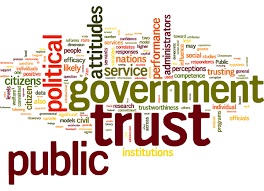Micro, Small, and Medium Enterprises (MSMEs) form the backbone of the Indian economy, contributing significantly to employment generation, industrial output, and exports. The Union Budget 2025-26 has introduced key changes in the classification of MSMEs.
To help MSMEs scale up operations and access better resources, the investment and turnover limits for classification have been increased by 2.5 times and 2 times, respectively. This is expected to improve efficiency, technological adoption, and employment generation.
Revised Classification Criteria
| Investment (not exceeding) Rs. In Crores | Investment (not exceeding) Rs. In Crores | Turnover (not exceeding) Rs. In Crores | Turnover (not exceeding) Rs. In Crores | |
| Current | Revised | Current | Revised | |
| Micro Enterprises | 1 | 2.5 | 5 | 10 |
| Small Enterprises | 10 | 25 | 50 | 100 |
| Medium Enterprises | 50 | 125 | 250 | 500 |
This revision provides higher investment and turnover limits, ensuring that more businesses can qualify under the micro, small, and medium enterprise categories, thereby enjoying MSME-specific benefits.
Key Objectives of the Reclassification
The government aims to achieve several economic and industrial goals through these changes:
- Encouraging Growth & Scalability – MSMEs often hesitate to scale up due to the fear of losing classification benefits. The revised limits provide room for expansion without immediate reclassification.
- Enhanced Credit Availability – Banks and financial institutions rely on MSME classification for loan approvals. With higher thresholds, more enterprises can access collateral-free loans and government-backed financial schemes.
- Boosting Formalization of Enterprises – Many small businesses operate informally. The relaxed criteria encourage them to register, improving transparency and access to financial and policy benefits.
- Keeping Pace with Economic Trends – Inflation and rising costs have made previous thresholds outdated. The new limits reflect modern business realities, making the MSME framework more relevant and effective.
Challenges & Considerations - Risk of Misclassification: Some businesses may attempt to underreport investment or turnover to retain benefits.
- Competition Among MSMEs: Larger micro-enterprises may overshadow smaller firms when competing for subsidies and incentives.
- Implementation Hurdles: Smooth adoption of new norms by financial institutions and government bodies will be crucial.
Overall, the revised classification fosters growth, credit accessibility, and competitiveness for MSMEs while addressing inflationary pressures and modern business dynamics. However, proper monitoring and execution will be key to ensuring that the benefits are equitably distributed.
The MSME reclassification as per Budget 2025-26 is said to be a strategic move to strengthen the sector by enabling more businesses to avail policy benefits while fostering growth. By increasing the investment and turnover limits, the Union Government has created an environment conducive to scaling up operations without losing the advantages of being classified as an MSME. However, effective implementation, proper monitoring, and industry awareness will be critical to maximizing the benefits of this reform.
The Companies who have registered under Udyam portal can reap the benefits of re-classification and get updated certificate as per the latest classification which is effective from next financial year viz., 2025-2026. Those companies who have not registered under Udyam portal can use this opportunity and avail the exclusive benefits available for MSMEs.
Apart from re-classification, the government has introduced few important budgetary measures for MSMEs like enhanced credit availability, customised credit card scheme and support for first time entrepreneurs.
The higher financial threshold being introduced for classification must be read in conjunction with the financial support being provided for “Small and Medium” enterprises to augment their capacity, absorb technologies for enhanced productivity, automation and improve overall efficiency and enable optimum utilisation.
We think this result in increased mergers and acquisitions (M&A) amongst MSMEs and there are opportunities for infusion of capital into the stream of production, whether through private equity or M&A or listing of securities in the SME Listing platform.
If these initiatives are supported by significant cutting down of compliance costs and rationalisation of GST rates and substantial improvement of Ease of Doing Business, it will augur well for MSMEs.
References:
- https://www.indiabudget.gov.in/doc/Budget_Speech.pdf
- https://static.pib.gov.in/WriteReadData/specificdocs/documents/2024/dec/doc20241223476301.pdf
- https://pib.gov.in/PressReleasePage.aspx?PRID=2099687
- Image Source-https://www.hdfcbank.com/personal/resources/learning-centre/union-budget/budget-impact-on-msme







